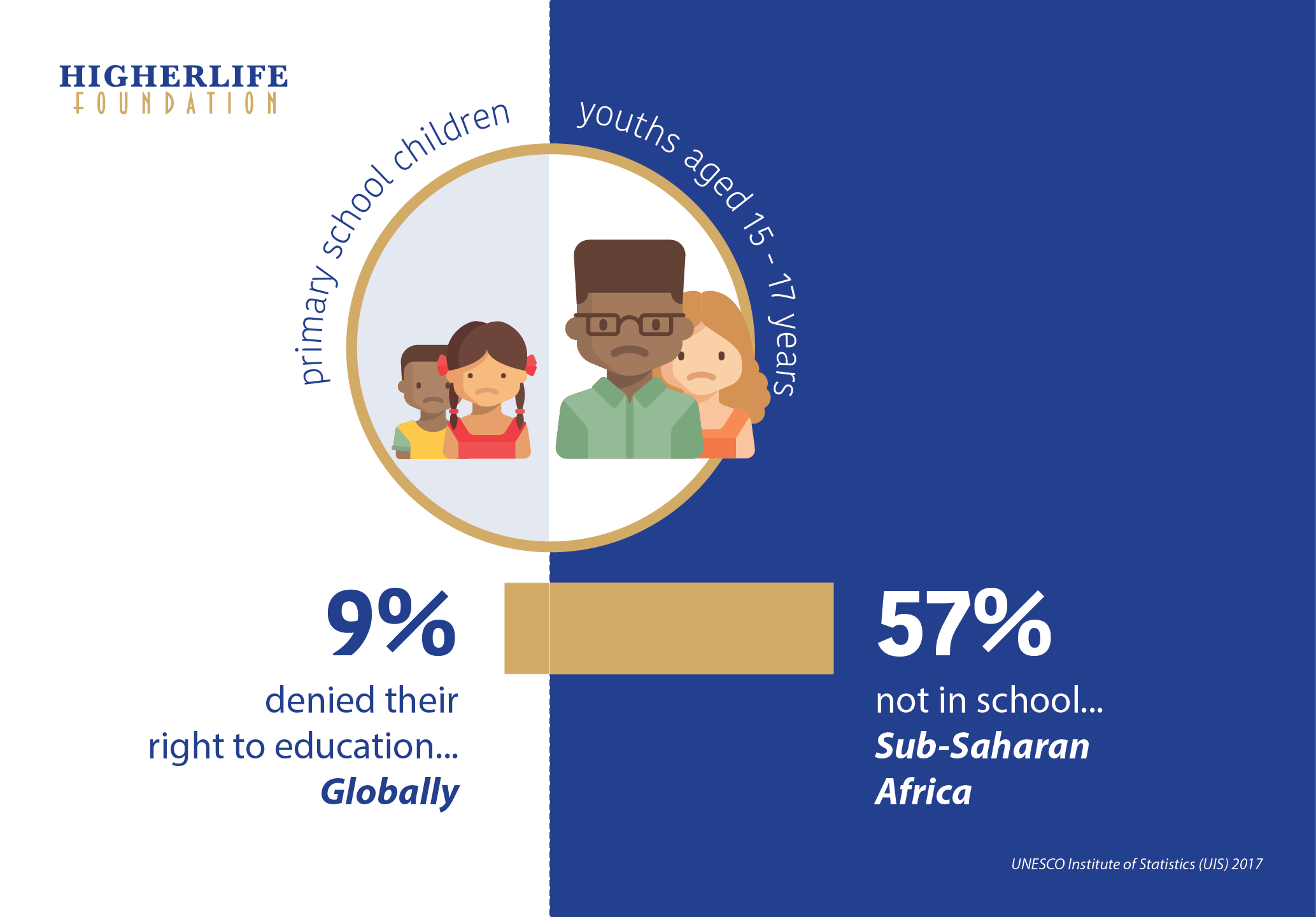According to UNESCO Institute of Statistics (UIS) 2017, there has been virtually limited progress in reducing out-of-school rates in recent years despite the role of education in poverty reduction. Globally, 9% of all children of primary school age are still denied their right to education, with rates reaching 16% and 37% for youth of lower and upper secondary ages, respectively. In total, 264 million children, adolescents and youth were out of school in 2015.
Sub-Saharan Africa remains the region with the highest out-of-school rates for all age groups: more than half (57%) of all youth between the ages of 15 and 17 are not in school as are more than one-third (36%) of adolescents between 12 and 14 years and one-fifth (21%) of children between the ages of about 6 and 11. This calls for more investment in education and possibly evaluating existing curricular to ensure quality graduate are produced. Six countries are home to more than one-third of all out-of-school children of primary age: Ethiopia, India, Indonesia, Nigeria, Pakistan and Sudan.

Of the 61 million children of primary school age currently out of school, 17 million will never set foot in a classroom if current trends continue (UNESCO, 2017). This affects one in three children out of school in sub-Saharan Africa, Western Asia and Northern Africa, and more than one in four of those in Central Asia and Southern Asia.
Girls in poor countries continue to face particularly steep barriers to education. According to UIS data, in low-income countries, more than 11 million girls of primary age are out of school, compared to almost 9 million boys. The good news is that the girls who do manage to start school tend to complete the primary cycle and pursue their studies at the secondary level and this emphasises the need for more gender sensitive programming in educational interventions to plug the existing disparities.


